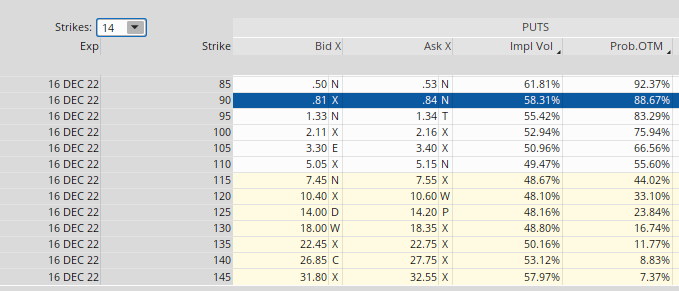Options trading involves two primary roles: buyers and sellers. Buyers pay a premium to gain the right, but not the obligation, to buy or sell an underlying asset. On the other hand, sellers collect the premium and take on the obligation to buy or sell the asset if the buyer exercises the option. In this article, I will dive a little deeper on where selling options is generally preferred to buying options.
The Two Sides of Options Trading: Buyers and Sellers
In options trading, there are two primary roles: buyers and sellers. While buyers pay a premium to gain the right, but not the obligation, to buy or sell an underlying asset, sellers take on the opposite side of the trade. Sellers collect the premium and take on the obligation to buy or sell the asset if the buyer chooses to exercise the option. Let's take a look at some of the benefits of being an option seller.
Benefit #1 - Capitalizing of Time Decay
Selling premium allows you to benefit from the passage of time, also known as time decay. This is otherwise known as theta decay of the option.
For those who might be more well-versed with options, you recognise that option value are made up of two components, governed by the following equation:
Option Value = Intrinsic Value + Extrinsic Value (a.k.a Time Value)
Every single day, the extrinsic value of the option value decreases - which is advantageous to option sellers.
"Wait Gin, what do you mean? The value decreases, but benefit us?"
Yes, that's right. Here's why.
Most people have heard of the term, "buy low, sell high". However, as option sellers, we want to sell high and buy back low and profit the difference. This means that every time the option price falls lower, we are able to buy back at a lower price and profit the difference.
Benefit #2 - Higher Probability of Success: Giving Yourself Room to Maneuver
When selling options, there is a unique benefit - which is the ability to choose your probability of success. This is otherwise called "Probability Out-of-the-Money" or what I describe as "Statistical Win Rate".

For example, in the above example - I am able to select the strike price of 90 and achieve a Probability Out-of-the-Money of 88.67%. This means that I have a 88.67% chance of keeping the option premium that I earned.
Note: Another way to look at Probability Out of The Money is to look at the Option Delta. A delta of 0.20 represents around a Probability OTM of 80%.
Selling premium provides a higher probability of success compared to buying premium. By selling out-of-the-money options, you give yourself more room for the stock price to move while staying out of the money. This increased flexibility translates to a higher probability of the trade being profitable.
By including technical analysis, we are able to increase our win rate further - also known as superimposing the mechanical win rate.
Benefit #3 - Strategies for Risk Management and Enhanced Returns
One advantage of selling premium is the ability to use different options strategies to manage risk and enhance returns.
One of the strategies I often use is the vertical spreads. This allows me to mitigate risk and generate income by combining options with different strike prices and expiration dates.
An added benefit of vertical spread is that it allows me to start with a small amount of capital to start extracting cash flow from the stock market.
In fact, selling vertical spreads was how I first started in my option selling journey back in 2017 as well.
Conclusion
Selling Options - A Valuable Tool with Proper Risk Management
Selling options offers several advantages over buying options. It allows you to benefit from time decay, provides a higher probability of success, enables the use of options spreads to optimise the usage of the capital. However, it's essential to thoroughly understand the risks involved and implement proper risk management techniques. Options trading can be complex, but with proper education, practice, and discipline, selling premium can be a valuable tool in your trading arsenal.
To mitigate these risks, it's crucial to implement proper risk management techniques. This includes setting clear profit targets and stop-loss levels, sizing your trades, and carefully selecting the options you sell based on set of criteria.
Lastly, it's recommended to start small and gradually increase your position size as you gain experience and confidence in your trading abilities. Options trading requires practice and a deep understanding of the market dynamics. Consider paper trading or using virtual trading platforms to test your strategies and get a feel for the market before committing real capital.
In conclusion, selling premium can be a powerful tool in options trading. It offers advantages such as capitalizing on time decay, higher probabilities of success and strategies for risk management. However, it's important to approach it with caution, proper risk management, and continuous learning. With the right knowledge, discipline, and understanding of the market, selling premium can be a valuable addition to your trading skill set.
If You Like This Content, You Might Enjoy This

Become an option seller and discover how to extract cash flow from the stock market even if you are starting with limited capital
